KADEX 2018
Report and photos by Gabriele Rivera
July 17, 2018
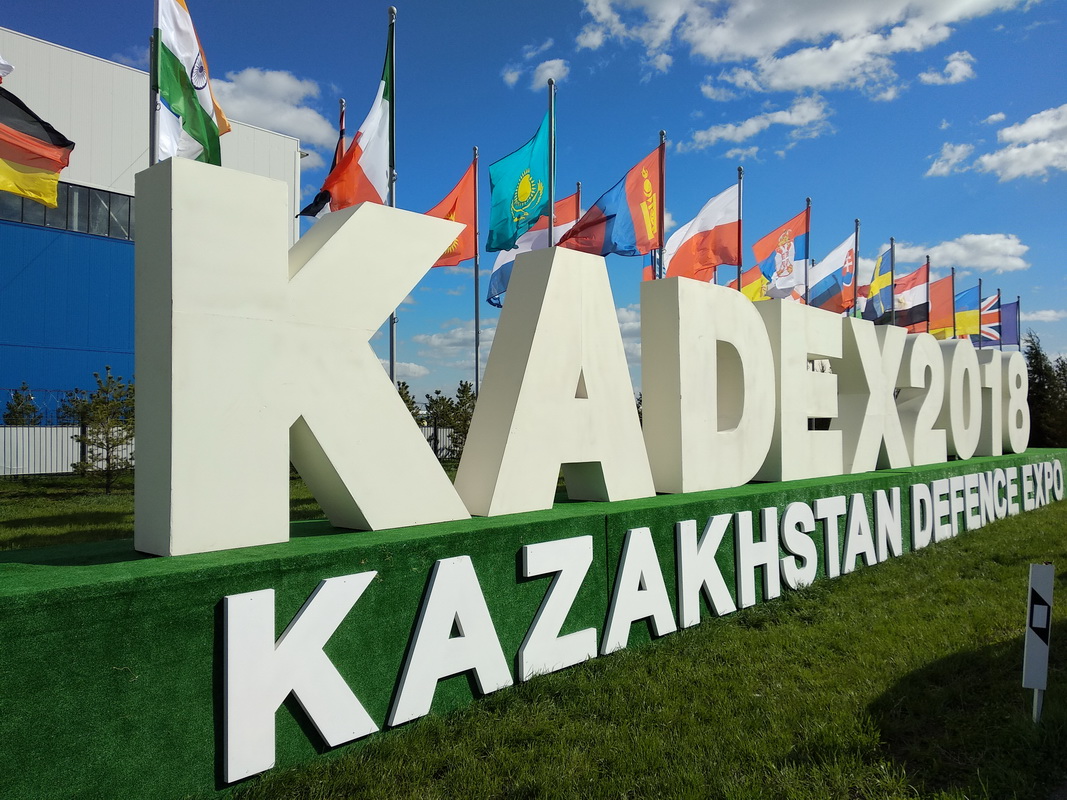
KADEX is an exhibition of the Kazakh defense industrial complex, open to the participation of international industries. The first edition was launched on May 2010; following a biennial frequency, the exhibition has reached its fifth recurrence. Each edition has seen an increment in the number of exhibitors and visitors, becoming one of the reference events in Central Asia, and this year’s edition has been held under the auspices of the Ministry of Defense and Aerospace Industry of the Republic of Kazakhstan.
After the dissolution of USSR, Kazakhstan inherited a defense industrial complex; developing it during 25 years since the independence, it has now reached some interesting level in areas like AFVs (Armoured Fighting Vehicle) and APCs (Armoured Personnel Carrier), ammunition and optronics. So KADEX is intended to showcase what the local industry is able to offer and to establish new cooperation programs with international competitors in order to fulfill the Kazakh armed forces needs and to gain knowledge in different defense-related technologies.
KADEX 2018 has hosted 324 exhibitors from over 30 countries; due to the political history of the country and to the geographical position, most of them belonged to Russia, Turkey and China; nonetheless a certain number of well-known Western players of the aerospace industry were present, like Leonardo, Airbus, MBDA, Rafael and others.


A paramount example of cooperation is visible just a few hundred meters from the KADEX’s venue, Astana International Airport; the structure hosting ECKE (Eurocopter Kazakhstan Engineering), a joint venture established in 2011 on a 50-50 basis by Kazakhstan Engineering National Company and Airbus Helicopters. ECKE is the only hub that provides distribution, maintenance and other services for the Eurocopter EC145C2, H130 and H125 for all of Central Asia.
Helicopters manufacturers played a significant role in KADEX 2018. Leonardo has exhibited the maquettes of the AW139 and the AW149; as of mid-2018 a fleet of nearly 100 helicopters of various models fly in Russia and CIS (Commonwealth of Independent States, of which Kazakhstan is part), qualifying Leonardo as the strongest foreign manufacturer in the region for multi-engines helicopters.

Another leader of the rotorcraft industry is JSC Rosoboronexport (a subsidiary of the Rostec state corporation); the Russian firm has been one of the main exhibitors in the Russian pavilion, whose stand was enriched with the reproductions of the helicopters which constitutes the spearhead of their offer, the Mi-35M, the Mi-171Sh and the Mi-28NE (sporting very flashy civilian colours), all of them combat-proven during the counter-terrorism operations in Syria. During the dynamic exhibition has been possible to see in action the first two models, operating with the KADF (Kazakhstan Air Defence Force).
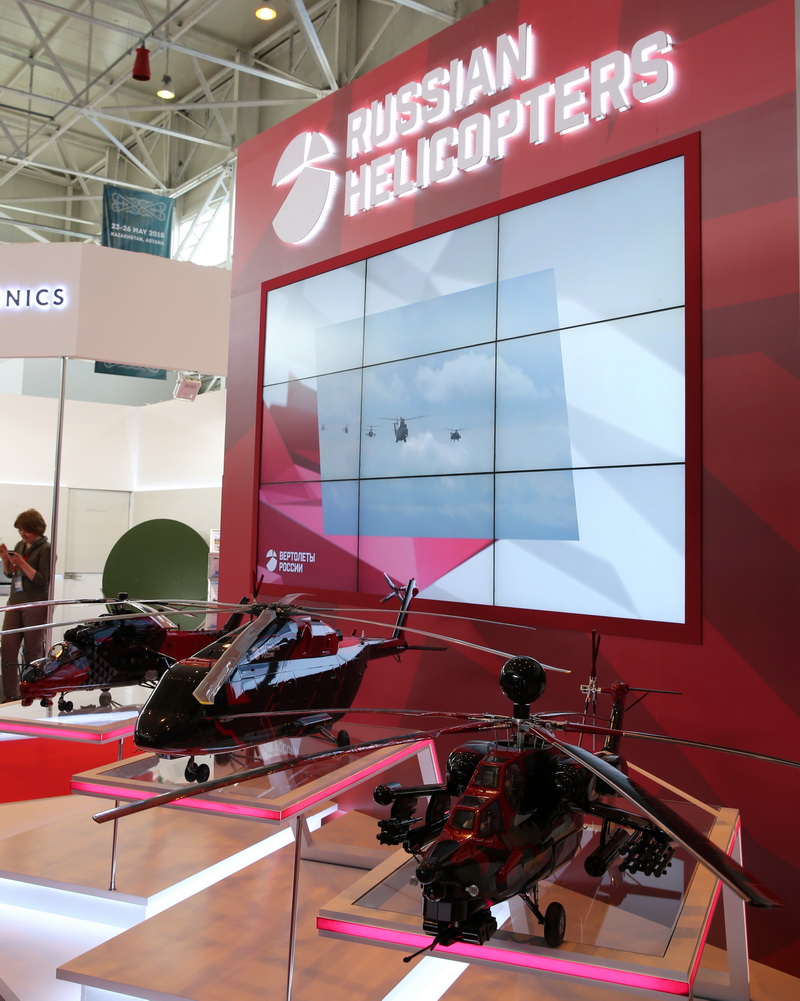
Due to the already established join-venture Airbus was obviously present, as “Strategic Partner” of KADEX; quite interestingly, the A400M model on display in the stand sported two air-to-air refuelling pods, a capability rapidly reconfigurable in all A400Ms already in service. A Turkish A400M has been one of the main attraction in the static exhibition; the delivery of the 10 aircraft ordered in 2003 should be completed in 2019, and Turkish Air Force is considering to buy another batch of 5-10 A400Ms. KADF already has a fleet of C295 in active service, so bringing the A400M at KADEX allowed Airbus to demonstrate the complementary between its two products.

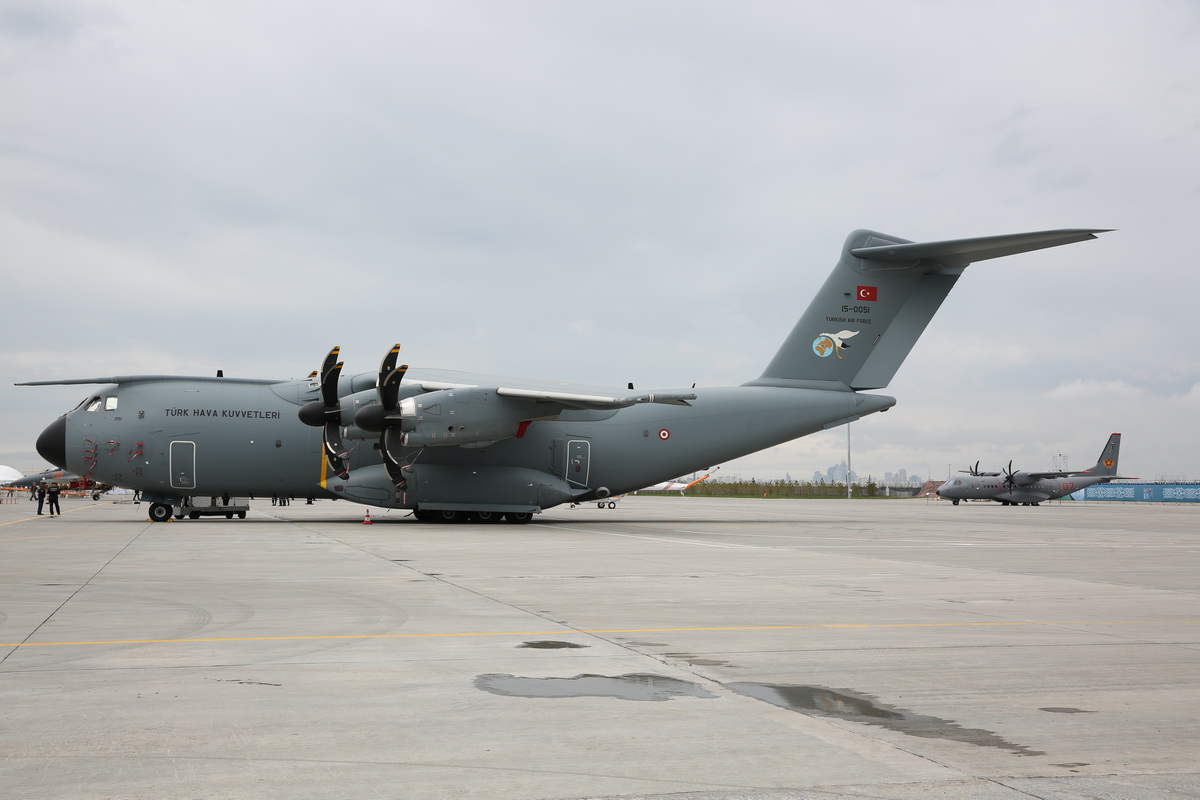
Another vendor offering its transport to the local air force is Shaanxi Aircraft Corporation; a big maquette of its Y-9E captured the attention of those who visited the CATIC (China National Aero-Technology Import & Export Corporation) stand in the China pavilion. After having sold the aircraft to the first foreign customer, the Myanmar Air Force, the Y-9E is thought to be a solid competitor should the KADF make the rumours relative to an order of an unspecified number of transport aircraft real.

KADF brought to KADEX its most advanced multirole fighter, the Sukhoi Su-30SM; on display in the static area and during the dynamic program she has been without doubts a magnet for everyone’s eyes and cameras. Insistent rumours, later confirmed by an United Aircraft Corporation’s statement, have it that Kazakhstan government had signed a new contract to buy further Su-30SMs from Russia, adding them to the 18 already ordered in 2015 and 2017, whose deliveries will be completed in 2020. So it was not a surprise to find the stand of the Indo-Russian BrahMos joint venture, the manufacturer of the supersonic cruise missile which is currently under integration with the Indian Air Force Su-30MKI.
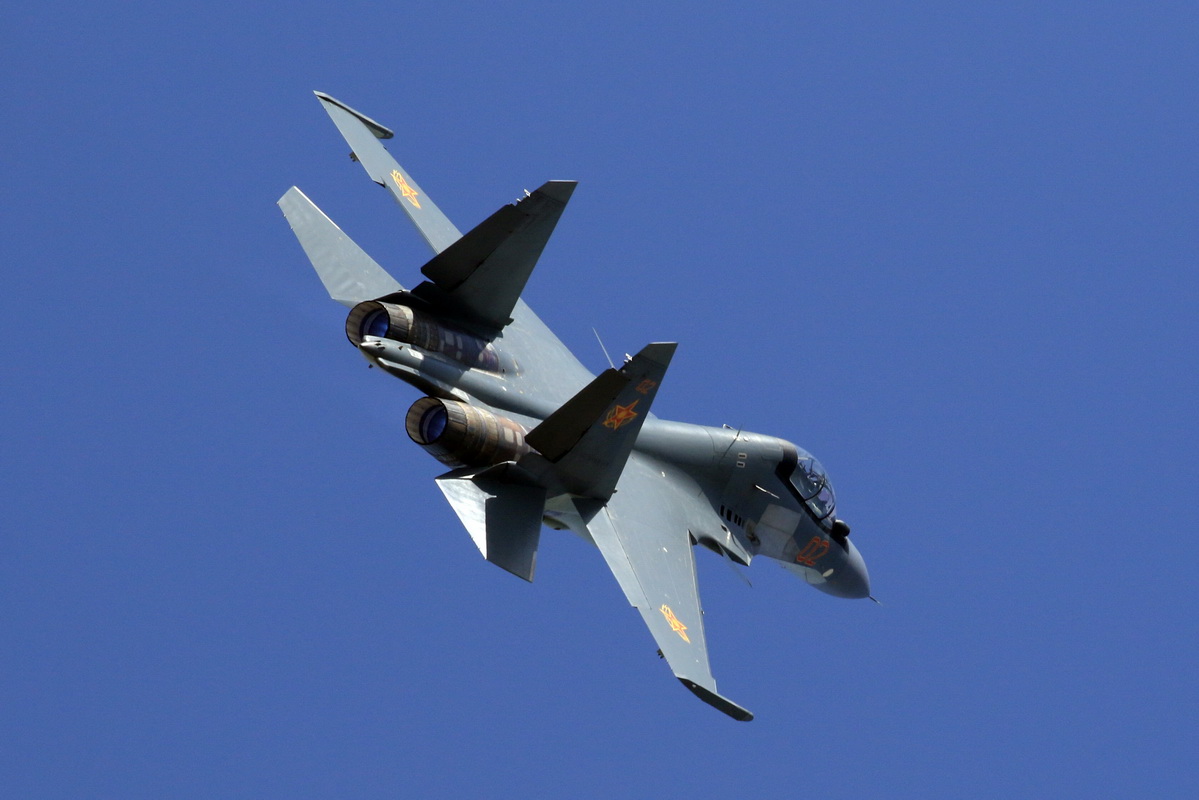
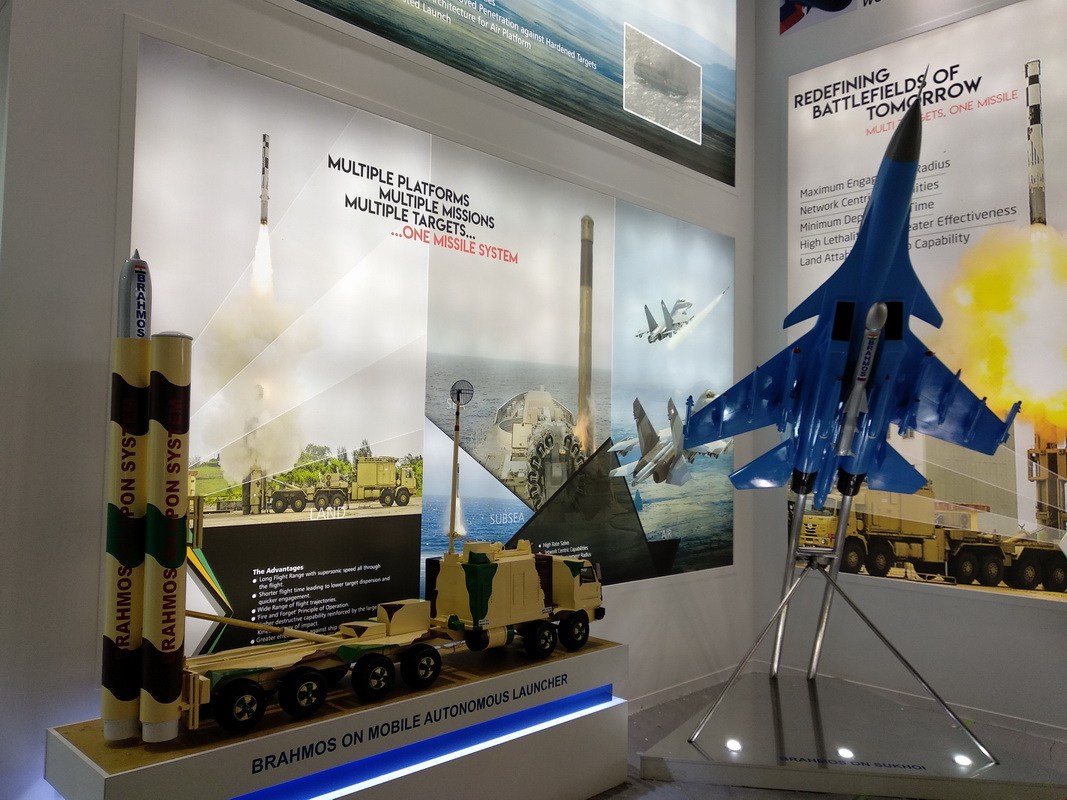
The Kazakh Air Force’s inventory is almost entirely formed of Russian aircraft and most of them are equipped with old avionics. So at KADEX it has been natural to find several competitors offering retrofit packages for MiG-29 and Su-25, mainly based on interfacing new weapons, adding modern capabilities to the radar and the navigation systems and installing advanced ECMs.
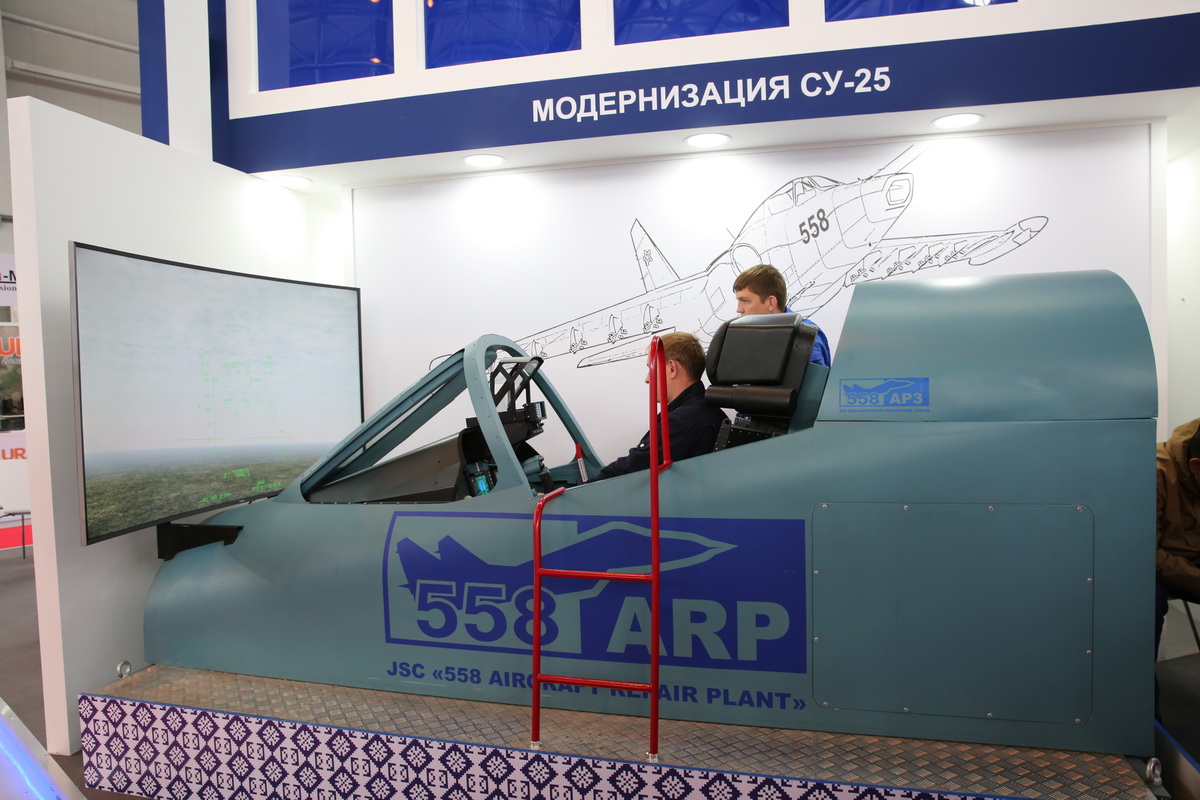
Needless to say, most of the aviation-related stands have exhibited their drones (or new kind of weapons intended to disrupt the functioning of the insidious hobby-like models); in the static area a CAIG (Chengdu Aircraft Design Institute) Wing Loon, in service with the KADF, has been on display (with heavy concrete blocks keeping it to the ground due to the strong winds), while the Kazakh own model, currently under development, has been one of the interesting items in the local industries’ pavilion. A prototype quite interesting has been the Belarusian Burevestnik MB, whose payload can be two small UAVs which can extend the range of the surveilled area.
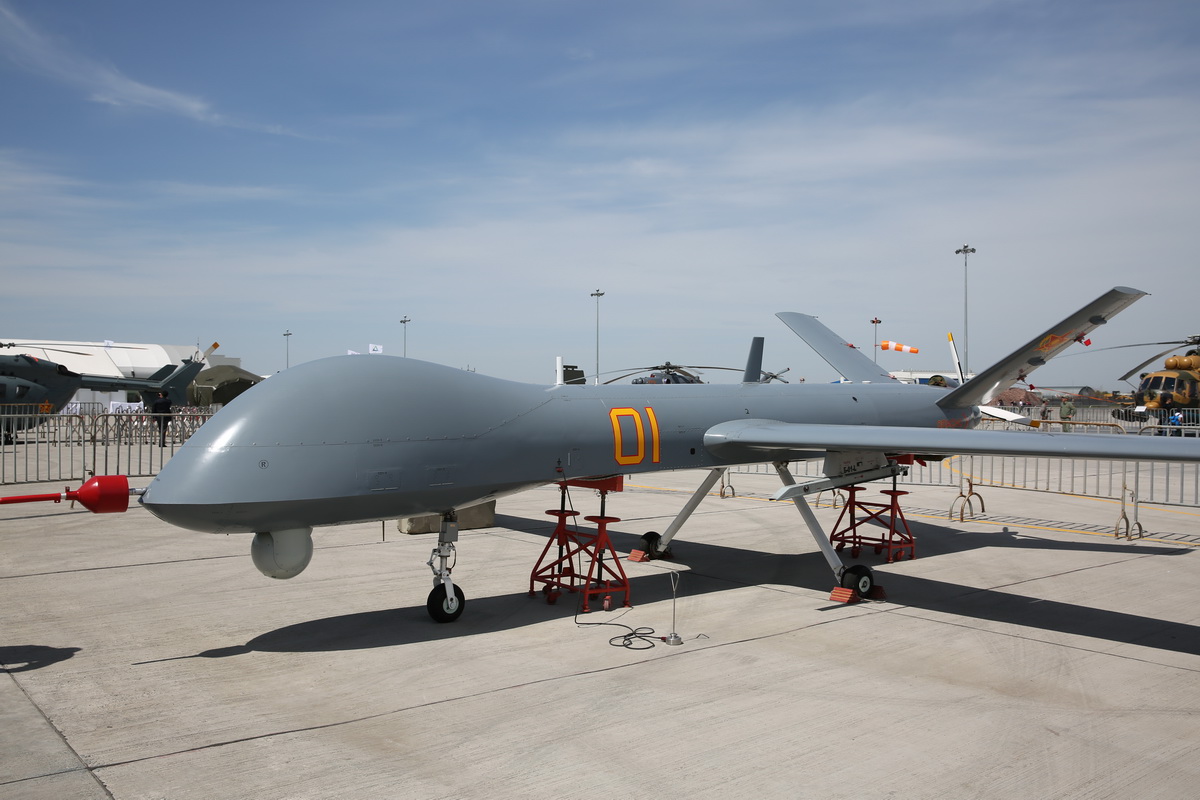


Another competitor in the unmanned vehicles arena is TAI (Turkish Aerospace Industries), which offers the Anka, a MALE (Medium-Altitude Long-Endurance) UAV, whose autonomy reaches 26 hours. The Turkish Armed Forces have already received six Anka-S and the interest of many Asian countries is real; during KADEX TAI and KAI (Kazakhstan Aviation Industry) signed a Memorandum of Understanding which could bring to the local production of Anka and Hurkus, the New Generation Basic Trainer offered by TAI.
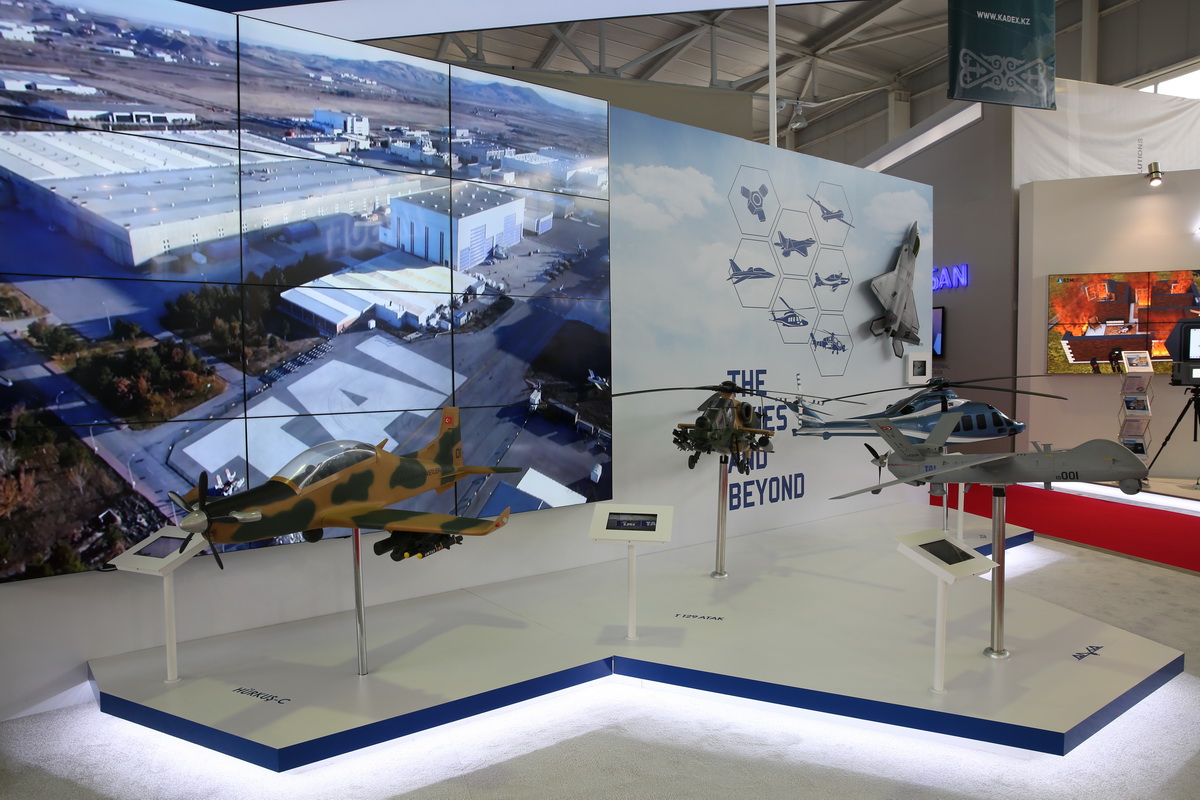
Several competitors offered weapons, often intended to replace old Russian payloads and ammunitions for tanks, mortars and rocket launchers. Turkey with Aselsan and Israel with Rafael were among them; while Aselsan brought its guidance kits for precision guided bombs, Rafael exhibited its Spike missiles, actually offered to replace Russian AT-4 and AT-5 anti-tank models, but already proven to be launched from airborne platforms. Turkish offer was also valid for the UAV payload sector, where Roketsan brought its new Smart Micro Munition MAM-L, already integrated on Bayraktar and Karayel tactical UAVs.
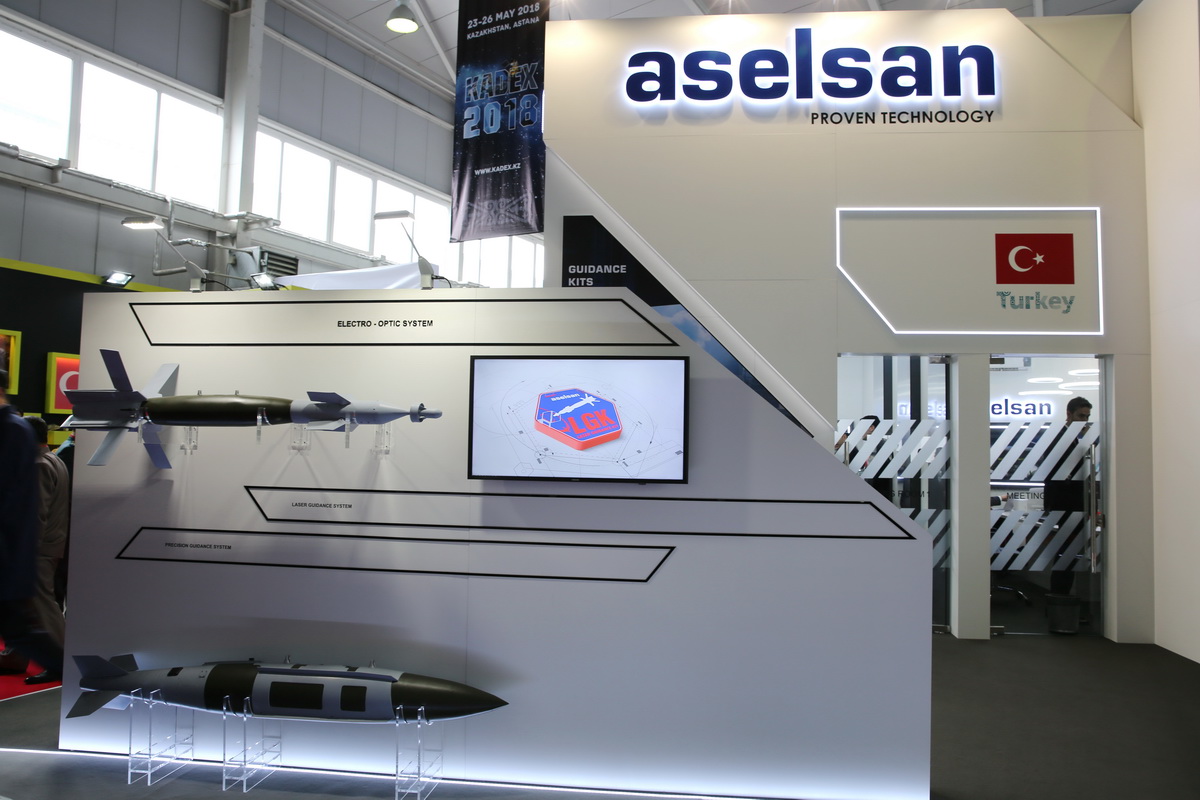

Kazakhstan lies in the middle of Asia and its borders are all land ones, except for the Caspian Sea, the largest enclosed inland body of water on Earth, whose shores belong also to Russia, Azerbaijan, Turkmenistan and Iran; so must not sound strange to have seen several competitors offering naval units of small and medium size, including local naval industries.

A review of the exhibitors present at Kadex can be thought to be complete only after having taken good note of the importance of the local space industry. Kazakhstan hosts the Baikonur spaceport and, also if it is run by Russia, the Kazakh know-how in this sector is relevant; its space agency, Kazcosmos, has celebrated the 25th anniversary this year. An entire pavilion was destined to space-related competitors, mostly from Russia, China, India and Europe (Airbus), each one offering satellites and launchers. Underlining the commitment of Kazakhstan in the space community a long row of panels enumerating Kazakh missions, satellites and astronauts was exhibited in the space pavilion, together with a re-entry capsule of the Soyuz TMA-16M, in which Aidyn Aimbetov, a Kazakh cosmonaut, landed on September 12, 2015 after a 10-day long mission to the ISS (International Space Station).


The static and dynamic exhibitions have been a bit disappointing; previous editions have been increasingly interesting and the website of this year’s event announced flight demos of Su-30s, MiG-29s and MiG-31s (Kazakhstan is the only country, besides Russia, operating them). Eventually the only one present at KADEX has been the new Su-30SM, one parked in the static apron and two taking the air almost daily to perform their aerobatic program. The only other fast jet flying has been SOLOTURK, the Turkish F-16 demo aircraft, displayed also in the static exhibition.
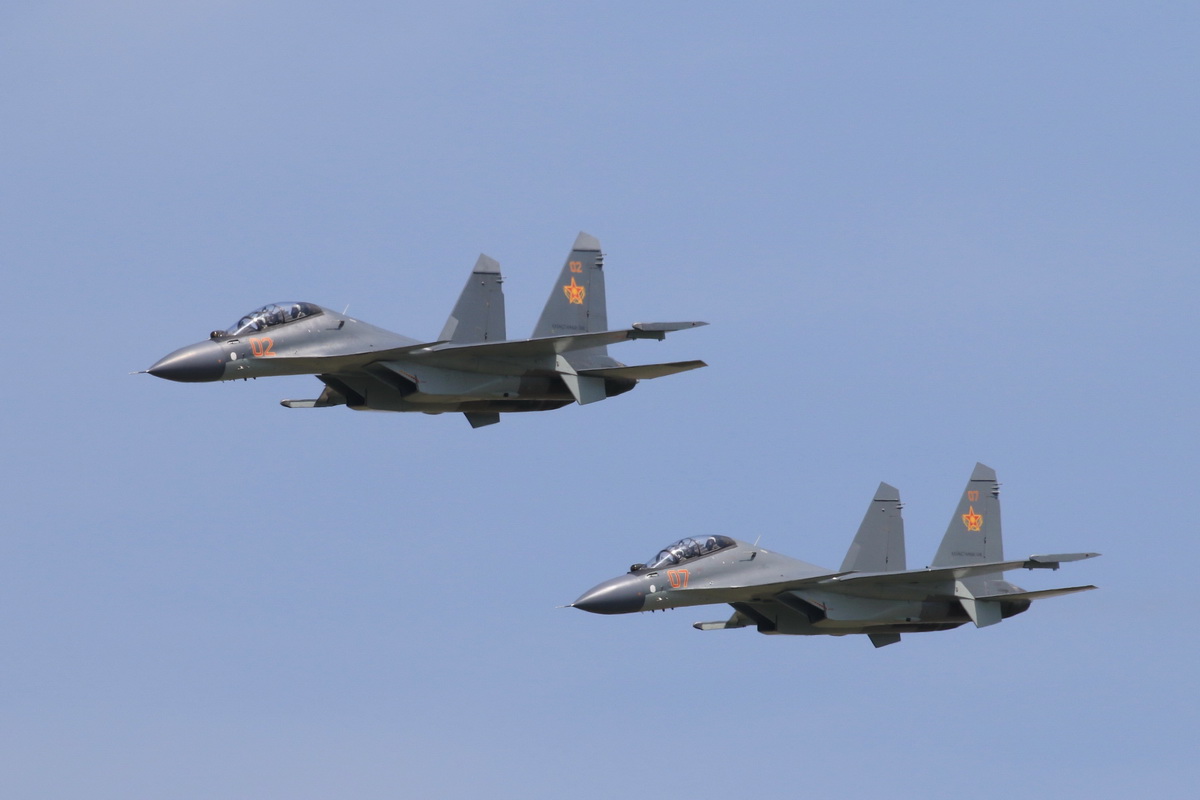
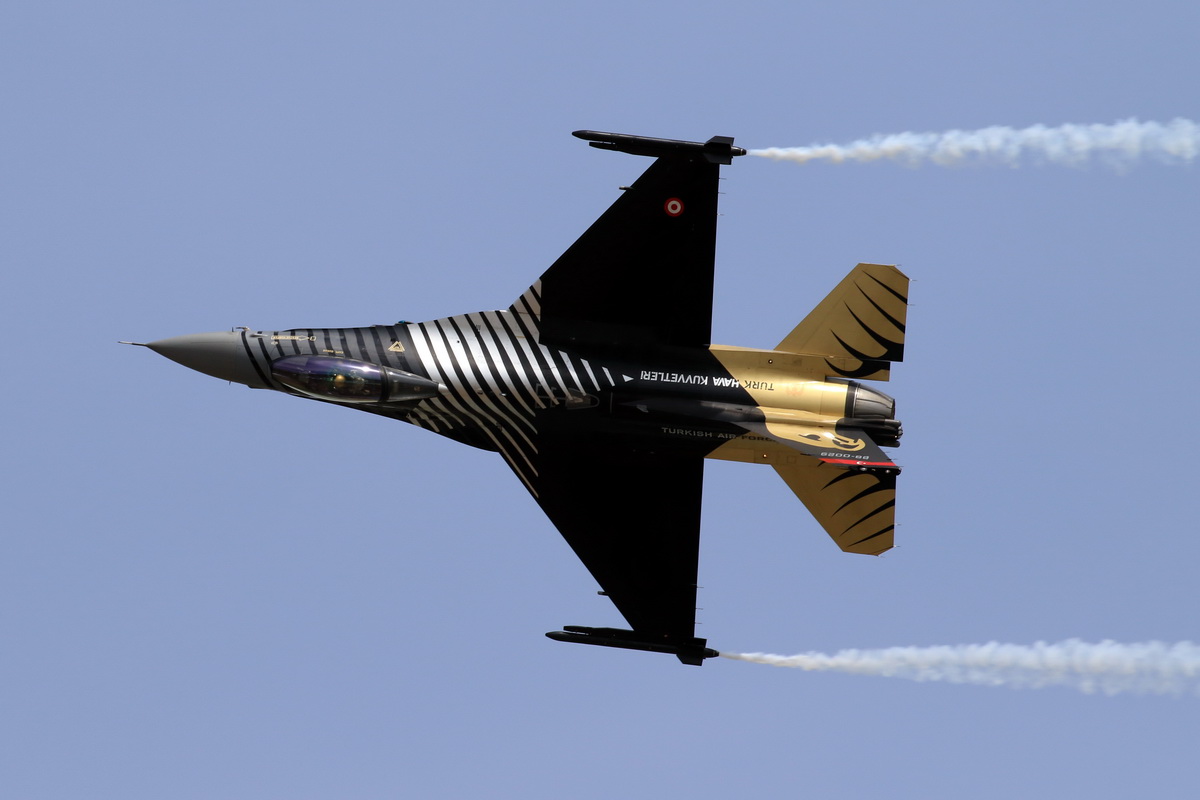
Being Astana’s international airport the venue of KADEX, for those interested in airliners the civilian traffic have offered the opportunity to take pictures of well-known planes with less frequently spotted airlines schemas and some Russian aircraft which can’t fly to Europe or USA due to environmental limitation regulations (noise and smokes).

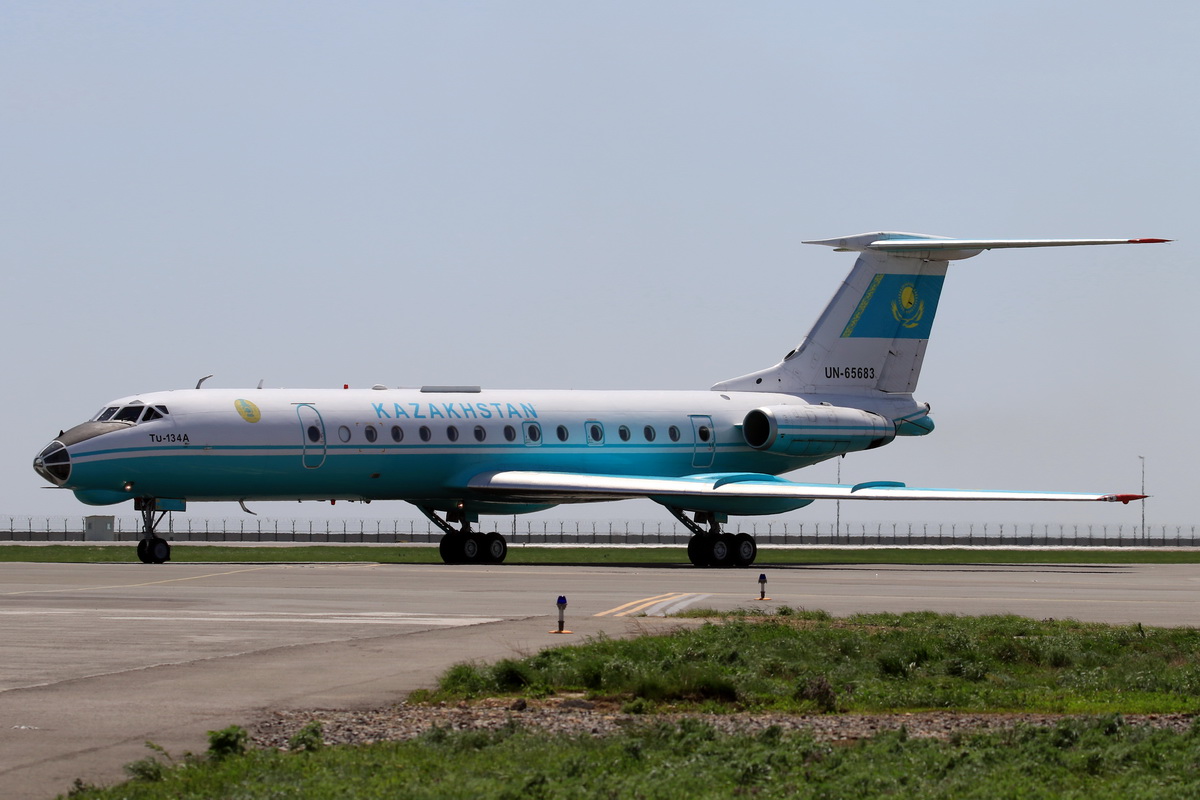
A simulation of an heli assault to a small terrorist hideout has been performed almost each day, being a chance to take pictures of KDAF EC145C2s, Mi-171Es and Mi-35M. KADEX has also offered the opportunity to watch local tanks and combat vehicles performing circuits while shooting salvos, an interesting complement to the airborne exhibitions.
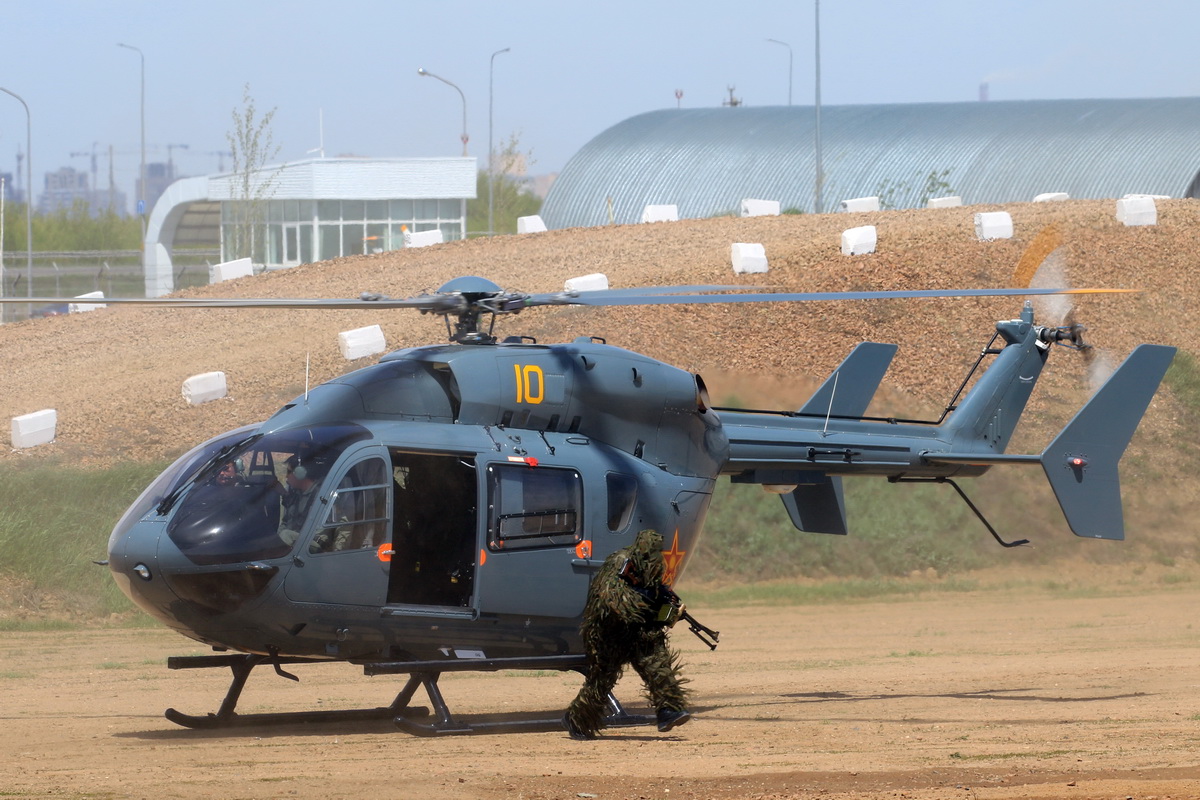
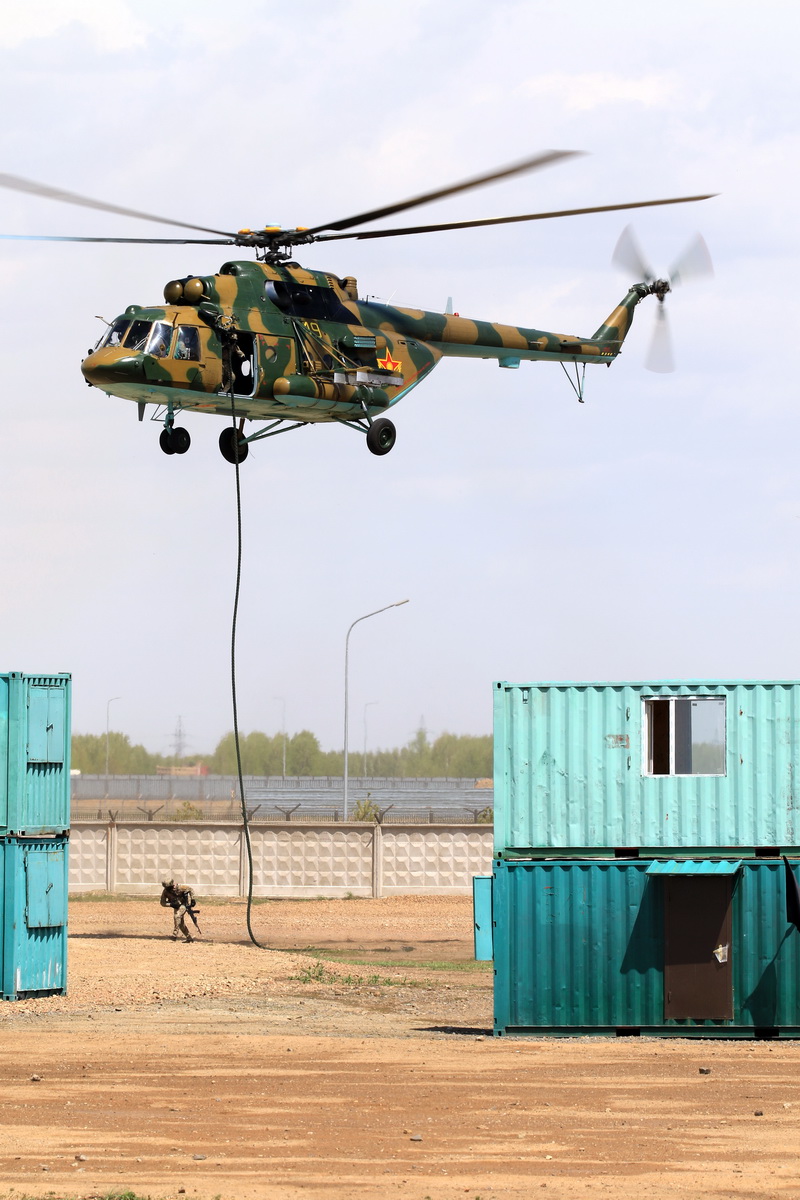
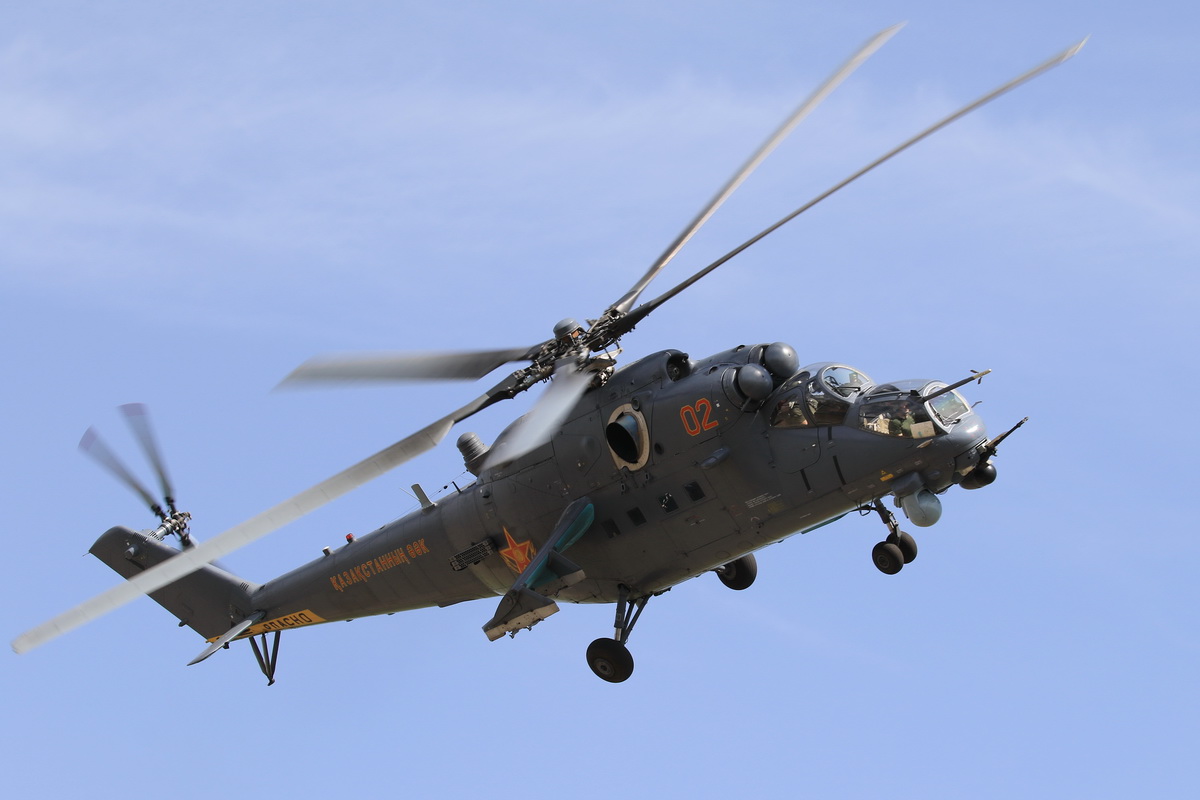
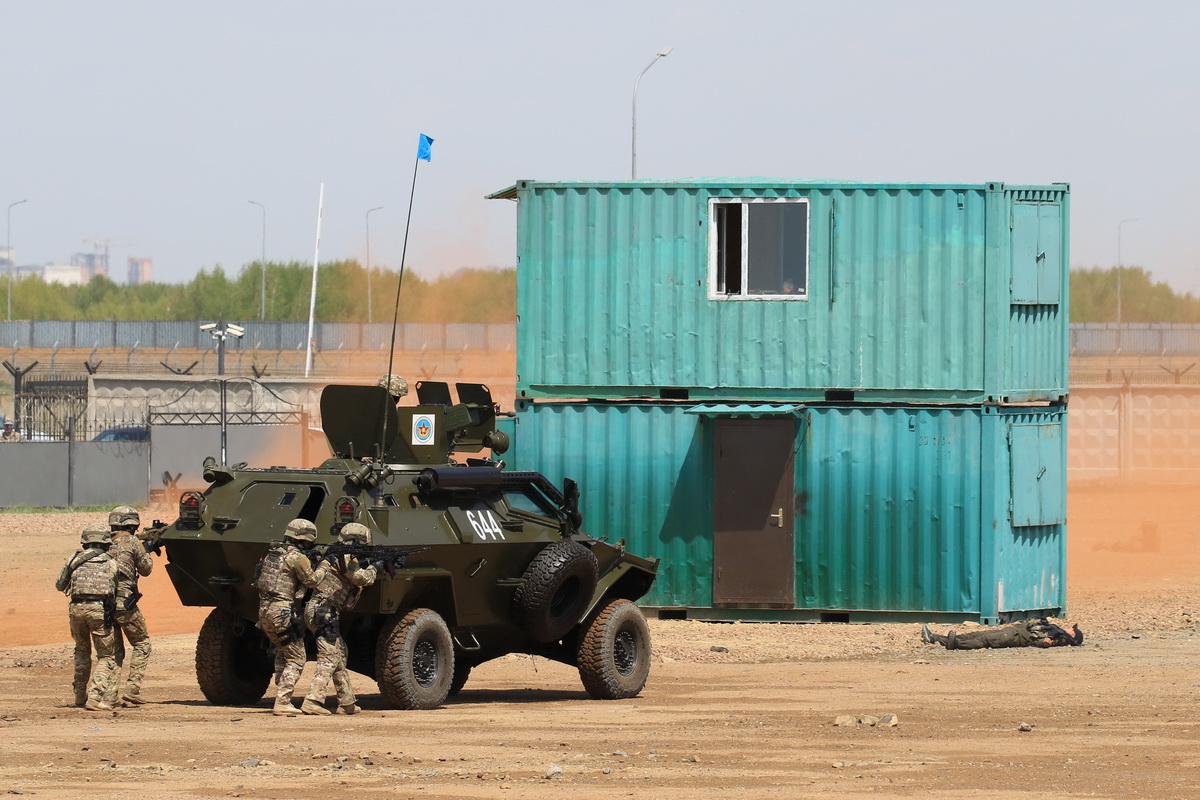
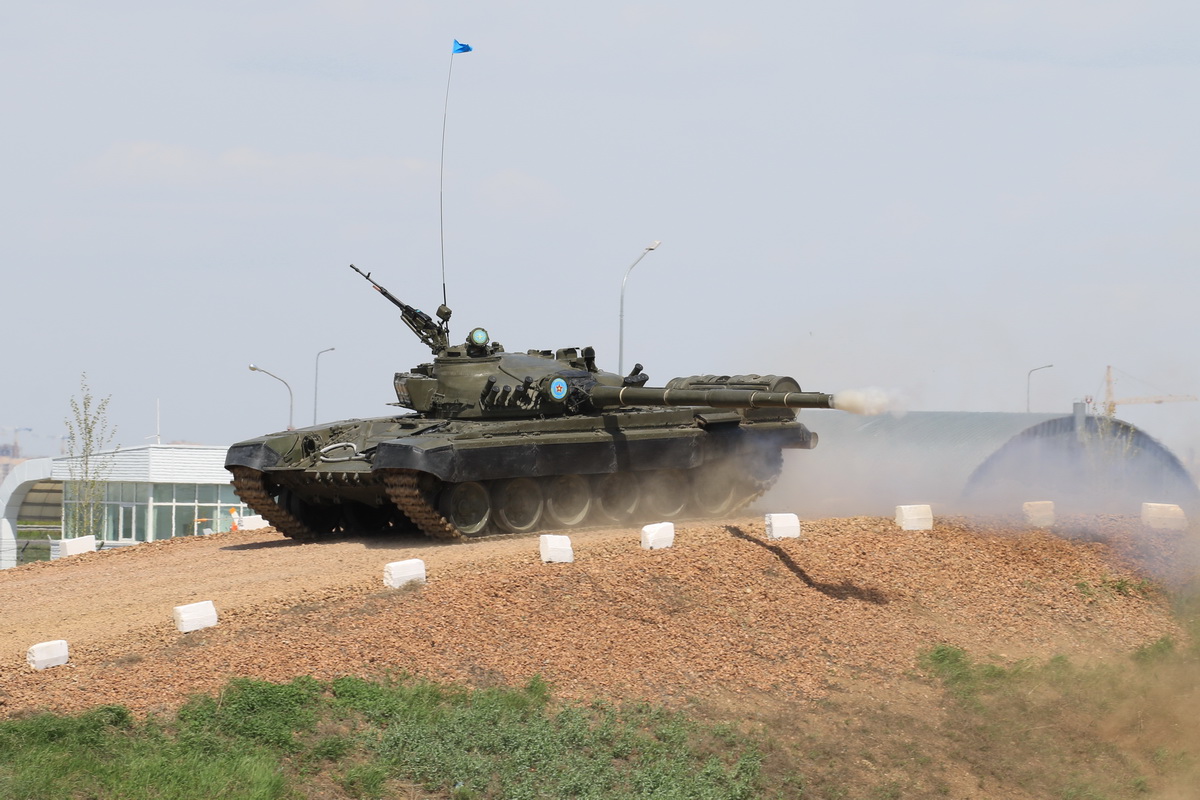
Next KADEX is scheduled in 2020; everyone’s hope is that next edition will bring again more KDAF aircraft to Astana airport (another valuable asset to take pictures of are MiG-27s!) and those models whose maquettes have been displayed by their makers in the pavilions. Be sure that APD will keep antennas well tuned and will pay another visit to KADEX if the expected participation will be attractive enough!
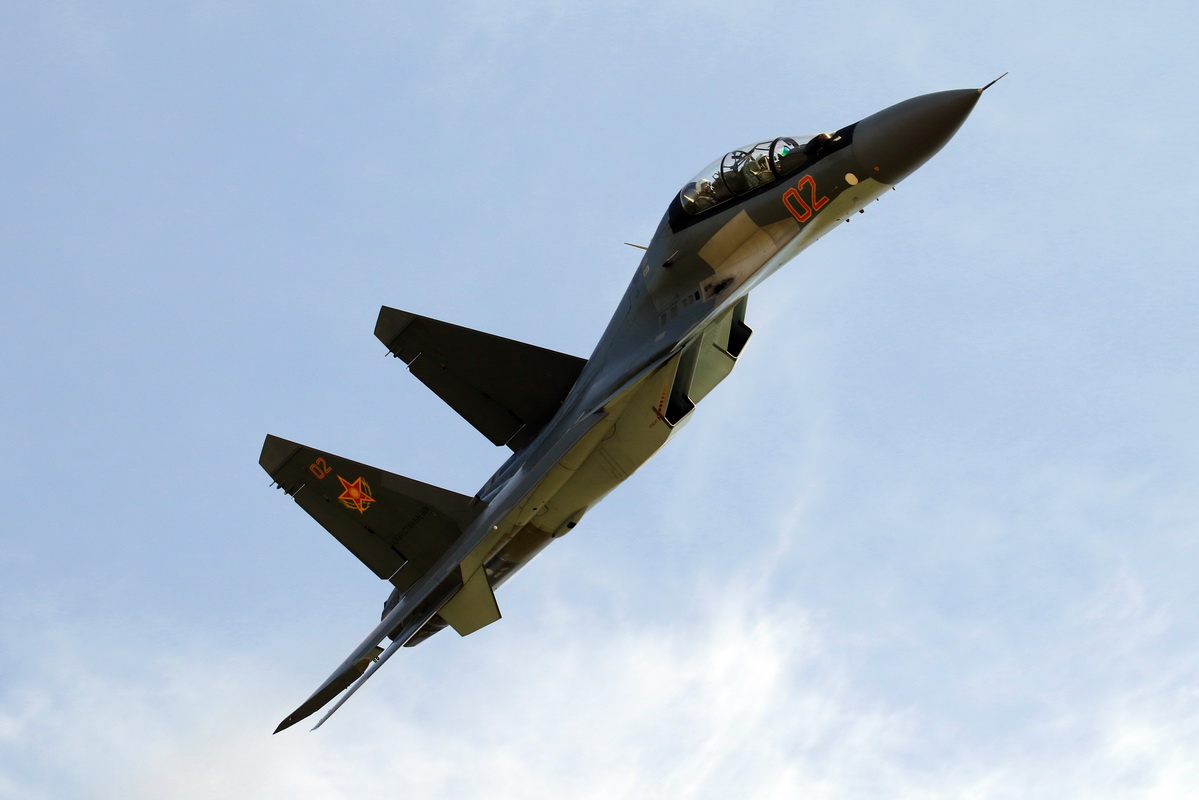

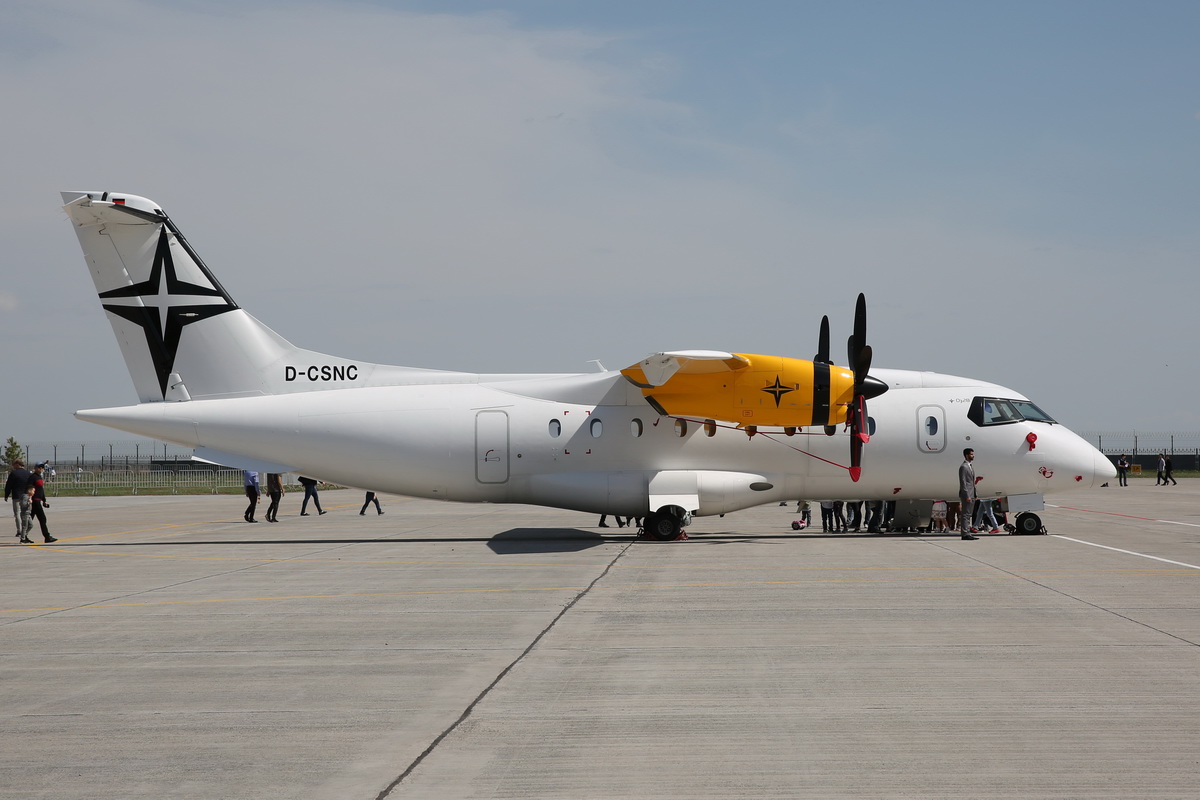
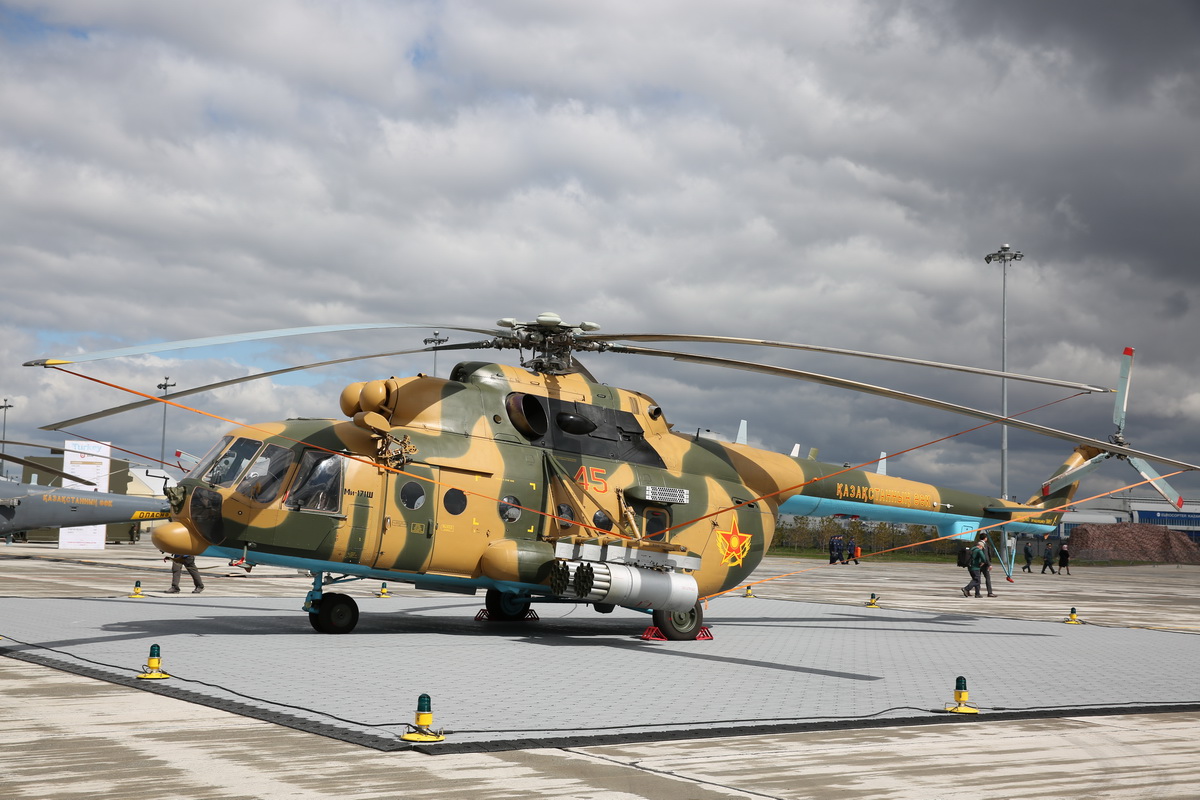
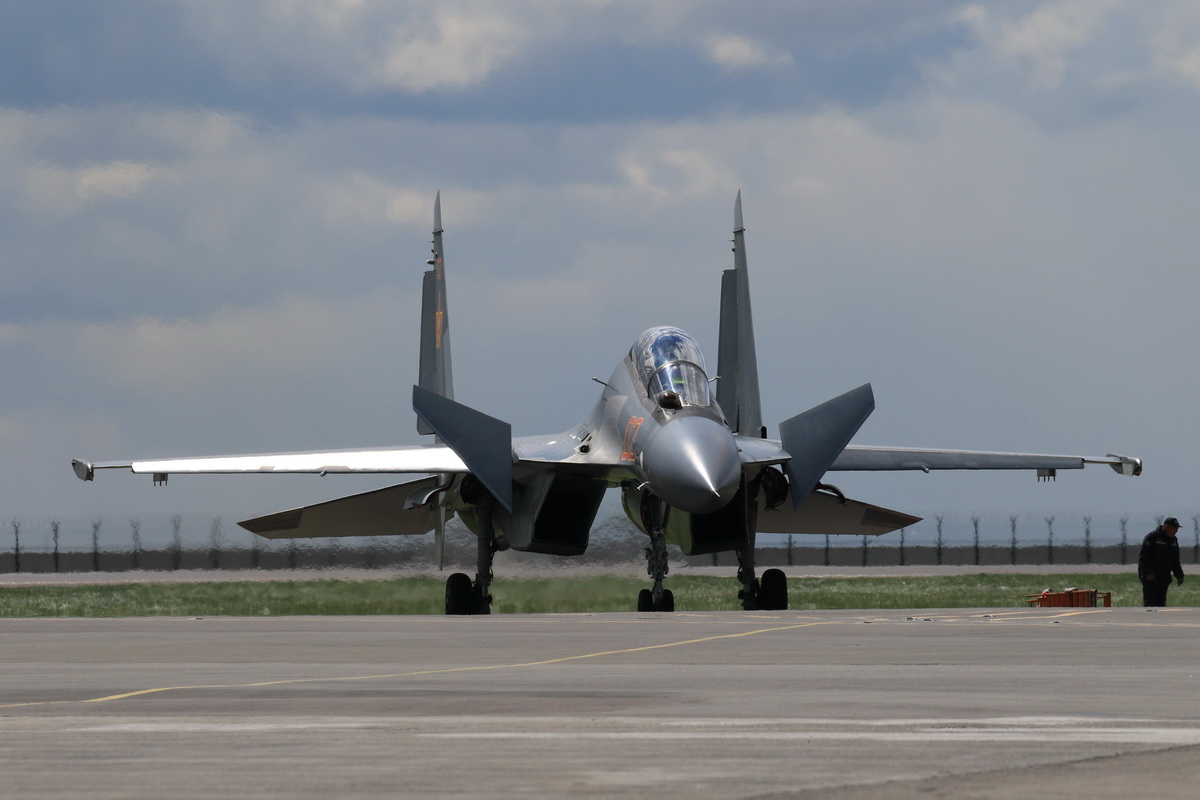
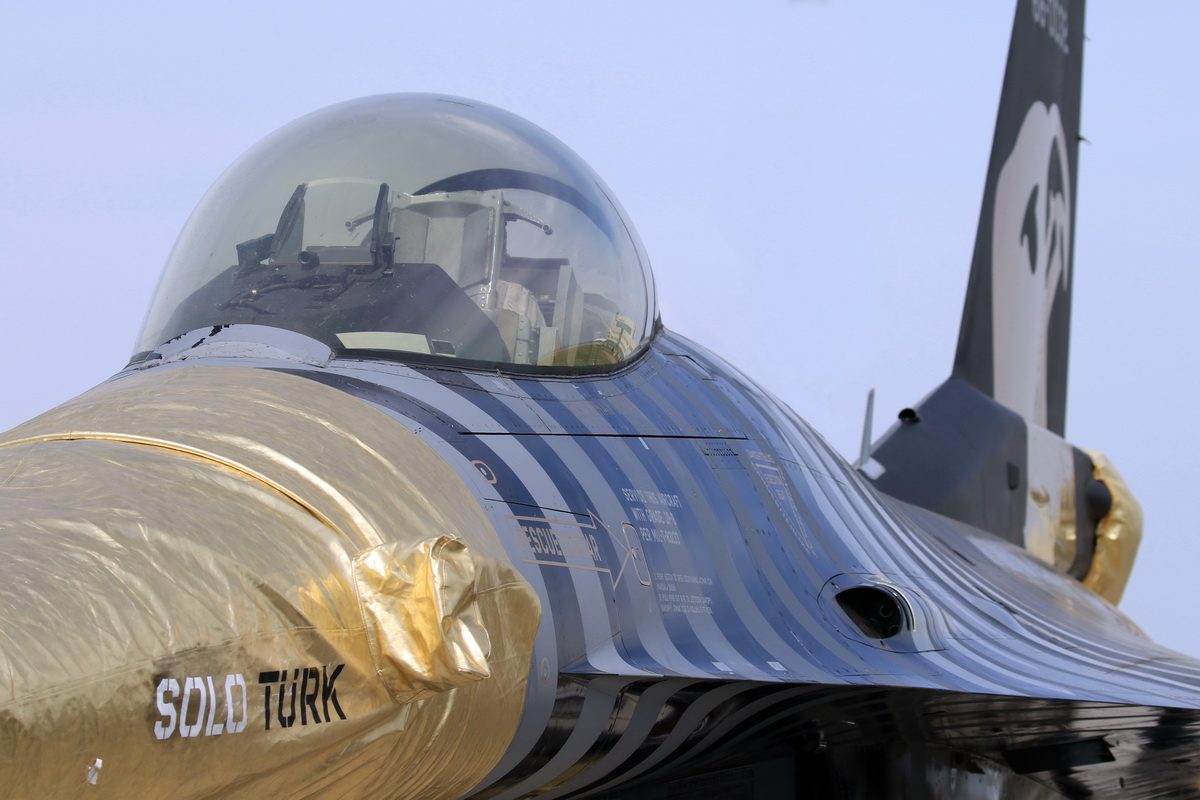
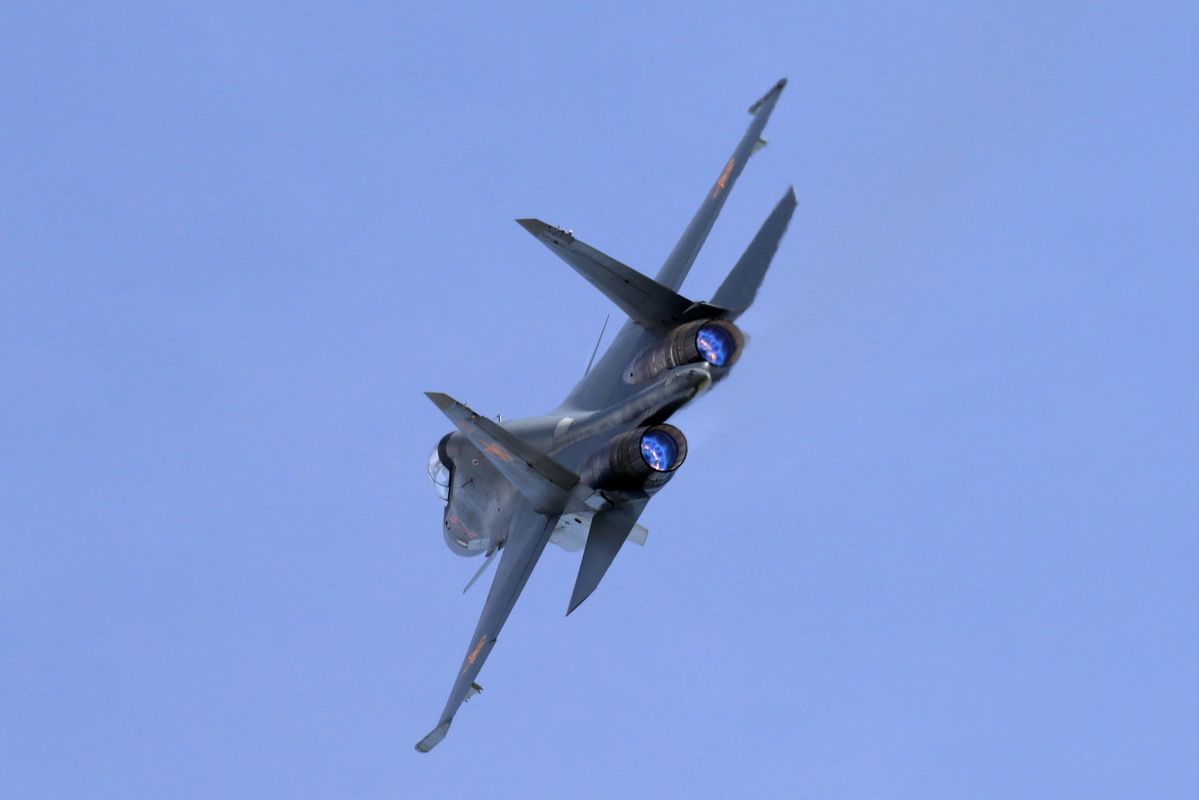
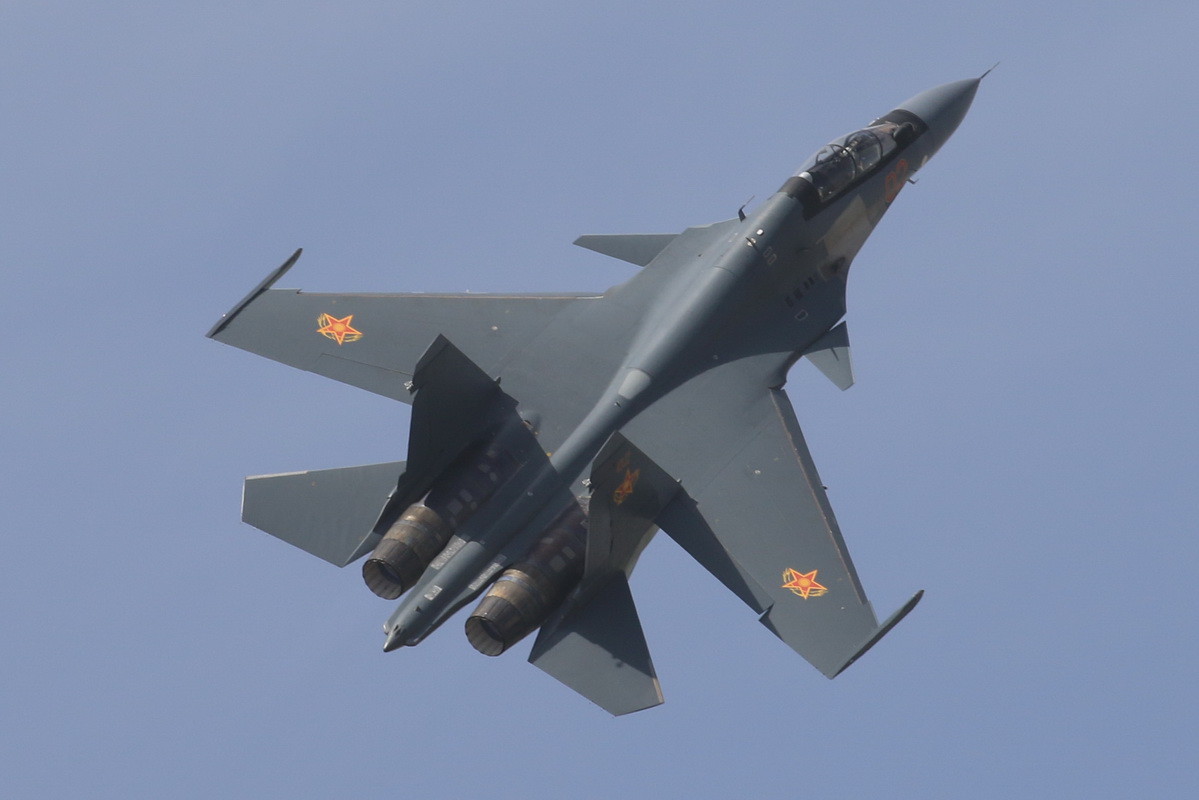
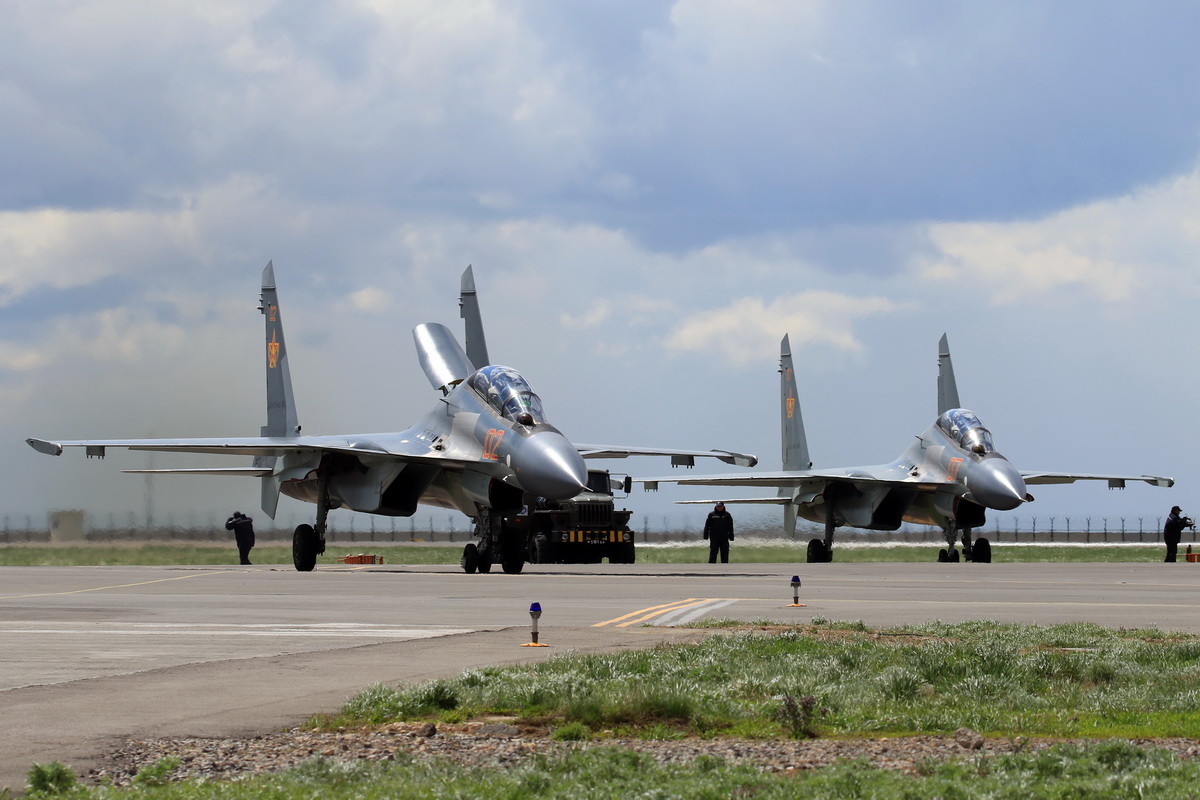
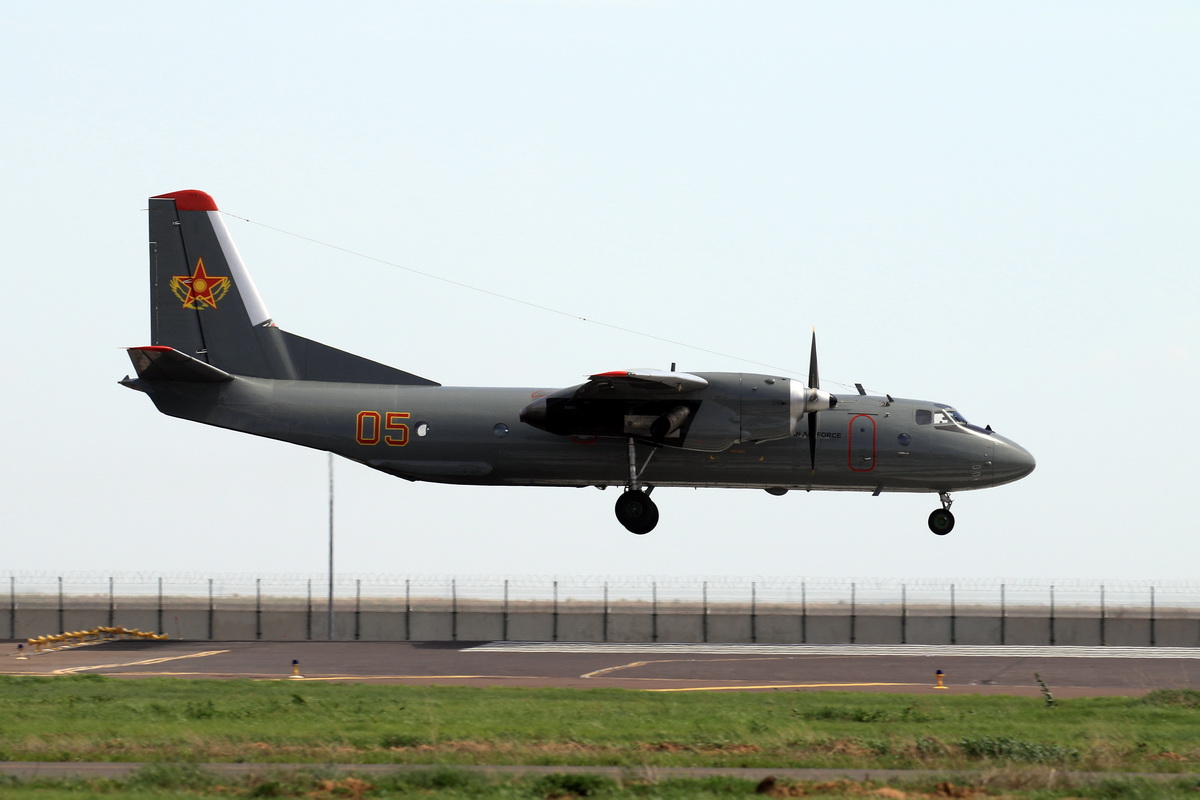

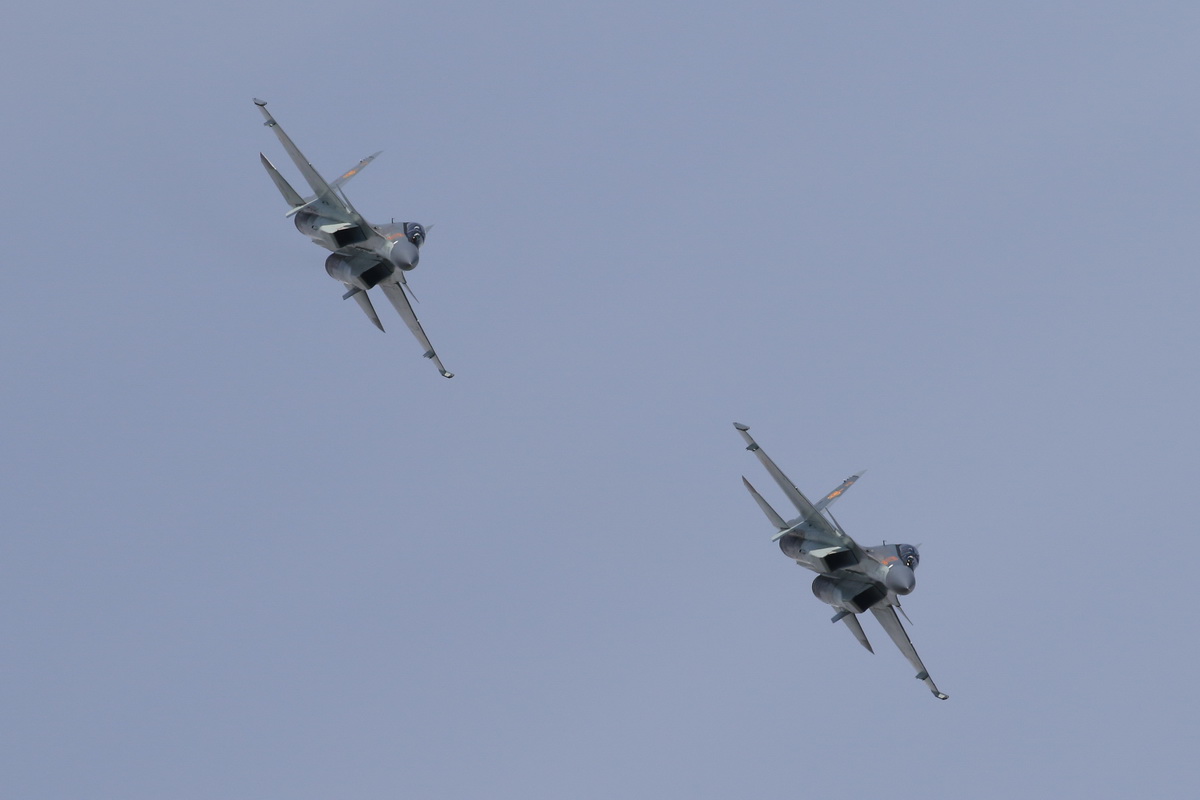
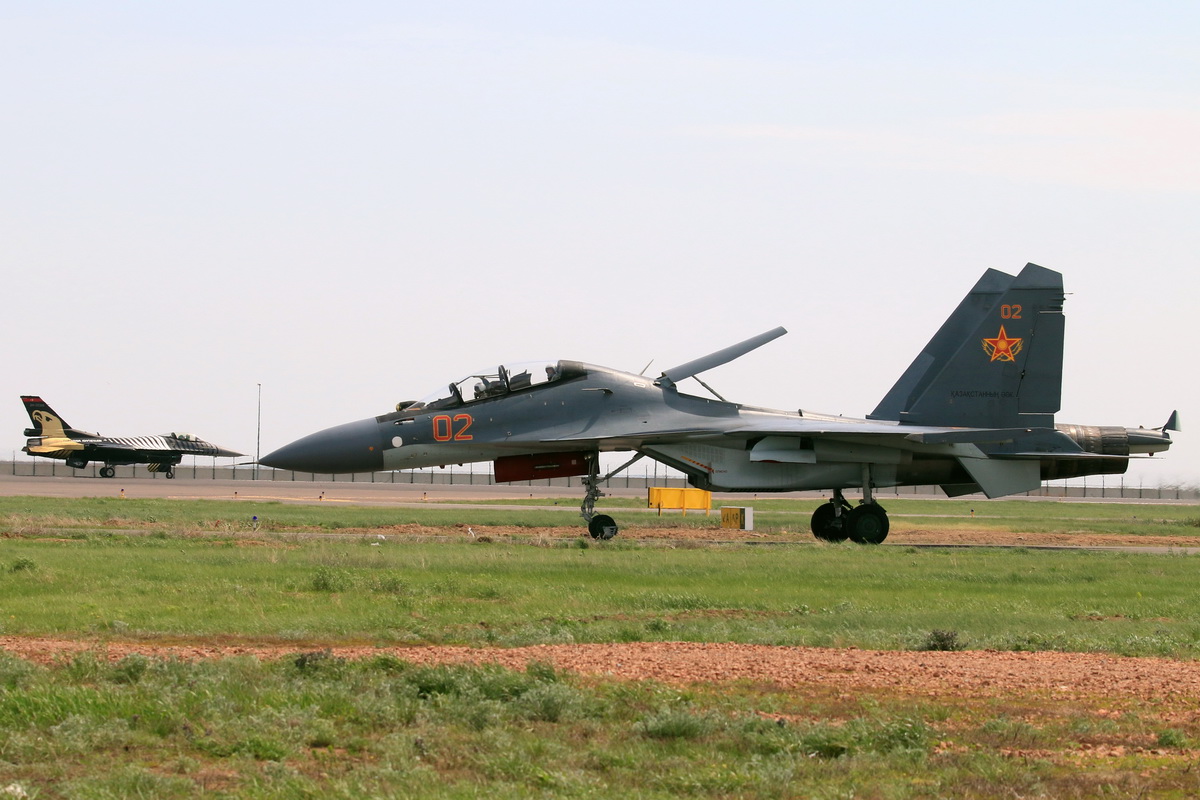
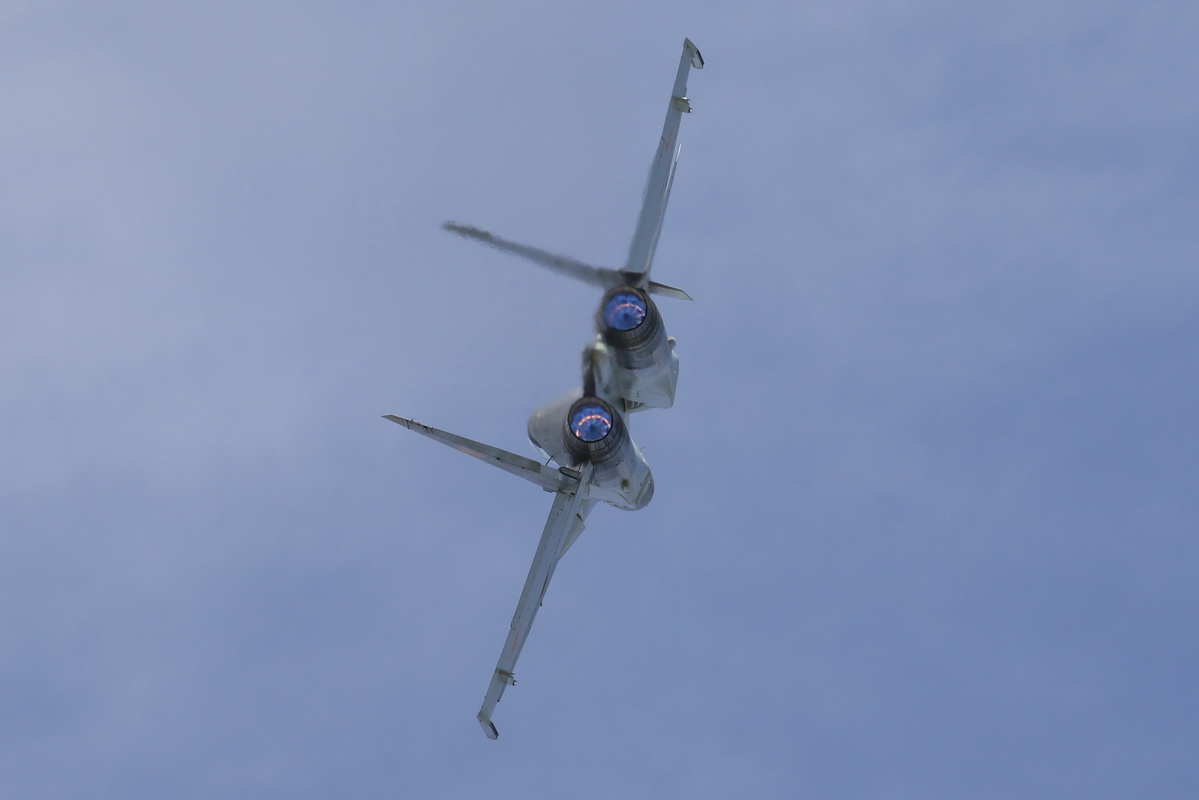
Click on an image below to page or swipe through the gallery:
Gabriele was born in Turin, Italy, grew up in Sicily and now lives in Rome. His love for aviation goes back to the days when he was seven years old, he started to collect the ‘History of Aviation’ sold weekly at the nearby newsstand. With that, he realized that his goal was to become a military pilot. This dream met a harsh reality when, during the medical tests, a defect in his chromatic sense of sight was discovered.
His interest in photography arose a few years later, when he bought from a colleague his first single-lens reflex camera, a Pentax ME Super. Then everyday life took its toll; working as an IT analyst, studying for an MD in political science and starting a family left no time for enjoying his old interest for aviation. One day in 2008, he decided to revive the passion, starting again to take pictures of aircraft each time he has a chance. Now, using Canon gear, he is striving to become a photojournalist.
Gabriele can be reached at: [email protected]

